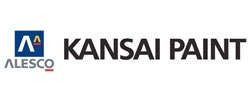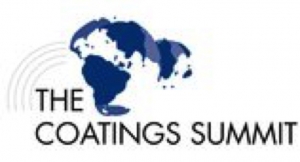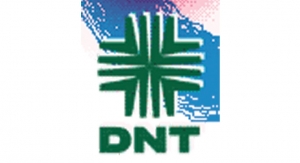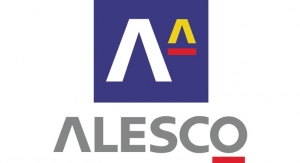Kerry Pianoforte, Editor07.22.15
09 Kansai Paint Co., Ltd.
Osaka, Japan
http://www.kansai.co.jp/global_site
PUBLIC COMPANY
YEAR ESTABLISHED: 1918
REVENUE: $3.113 billion t (2013: $3.126 billion)
MARKETS SERVED
• Automotive coatings • Decorative coatings • Industrial coatings • Marine and protective coatings
KEY EXECUTIVES
Hiroshi Ishino, president; board of directors: Mitsuhiro Fukuda, Masanobu Ota, Kunishi Mouri, Masaru Tanaka, Yoshikazu Takahashi, Koji Kamikado, Hidenori Furukawa, Shigeaki Nakahara.
Operating in Japan, Europe, the U.S., Southeast Asia, India and China, Kansai Paint Co. Ltd. offers a broad range of coatings solutions for various markets. It divides its business into automotive (38 percent), industrial (26 percent), decorative (26 percent), and marine and protective (6 percent) segments.
With $3.113 billion in sales revenue for 2014, Kansai Paint operates three state-of-the-art automotive paint plants from its headquarters in Osaka, Japan and is the leading supplier of automotive coatings to Toyota, Suzuki, Nissan, Honda, Peugeot and Renault worldwide.
Kansai’s Business Overview by Segment
Japan: In the field of automotive OEM coatings, in the first quarter of the year the government ended their policy of subsidies for the purchase of so-called eco-cars which along with other factors caused a reduction in the number of new cars produced, and this in turn led to a decline in sales. However, the company made a transition to recovery in the second quarter of the year onward. The field of industrial coatings saw recovery in the demand for coatings applied to automotive components, along with last minute purchasing before the consumption tax increase and other factors. In the field of decorative coatings, along with a rise in home improvement work on houses and apartments prior to the increase in consumption tax, Kansai implemented a sales promotion for its strategic products. In the field of protective coatings, there was a growth in demand from various sectors including public works projects, and the company experienced sales growth in each field. However, there was a slowdown in the market conditions in the fields of automotive refinish paints and marine coatings that led to weak sales. As a result, overall sales increased in this segment. On the other hand, the cost of raw materials increased which put pressure on profits.
India: In the field of automotive coatings, worsening business confidence combined with the high cost of fuel and high interest rates allowed weak market conditions to continue. However, its principal customers increased their production volume and this, in addition to an increase in sales prices, has meant that sales of coatings for the entire period under review have continued to grow. In the field of decorative coatings, despite the slowdown in the domestic economy, continuing expansion of demand as well as an increase in sales prices during the second half of the term under review has driven a growth in sales. At the same time, the depreciation of the rupee in the latter half of this term has led to a rise in the cost of raw materials which put pressure on profits.
Asia: In Thailand, despite the domestic economy being weakened by political turmoil in the latter half of the period under review, performance for this term was higher than last year. In addition, increased automobile production and domestic demand remained firm in Indonesia, and just as in Thailand, there was an increase in revenue and profits. In China, a worsening in relations between Japan and China occurred, but key customer demand picked up in the second half of the period, which combined with effects of the foreign exchange rate, led to a recovery in business performance. In addition, the business results of PT. Kansai Prakarsa Coatings, an Indonesian company that became a consolidated subsidiary in April 2012, contributed to consolidated business results. In accordance with the acquisition of shares in this subsidiary, amortization of goodwill was continuously accounted.
Africa: The South African economy suffered from sluggish growth due to the European economic downturn, along with the impact of soaring raw material prices. However, sales growth continued at an increased pace following signs of recovery in the European economy in the latter half of the term, which lead to improved revenue. In addition, the business results of Astra Industries Ltd., a Zimbabwean company that became a consolidated subsidiary in July 2013, contributed to consolidated business results. In accordance with the acquisition of shares of Kansai Plascon Africa Ltd. in 2011, amortization of goodwill was continuously accounted.
Other Regions: There were signs of recovery in the European economy, and the trend was towards increased domestic demand in Turkey, which led to a rise in sales, especially in the field of industrial coatings. Sales growth was further supported by the acquisition of new customers in the automotive sector. Moreover, with the increase in automotive sales in North America, equity in earning of affiliates increased, which also contributed to this growth in revenue.
Kansai continues to make inroads into the Africa coatings market. In addition to the company’s acquisiton of South Africa’s Freeworld Coatings, it recently acquired a 63.25 percent interest in Zimbabwe’s coatings market leader Astra Industries.
“Part of our strategy was to use Kansai Plascon in South Africa as our platform for growth into the rest of the African continent and we are happy to say that the acquisition of Astra is the first step in making this a reality and demonstrate our commitment that we made at that time,” said Nauman Malik, Kansai Plascon CEO. Kansai Plascon is the company formerly known as Plascon South Africa and was renamed after its merger with Kansai Paint.
Osaka, Japan
http://www.kansai.co.jp/global_site
PUBLIC COMPANY
YEAR ESTABLISHED: 1918
REVENUE: $3.113 billion t (2013: $3.126 billion)
MARKETS SERVED
• Automotive coatings • Decorative coatings • Industrial coatings • Marine and protective coatings
KEY EXECUTIVES
Hiroshi Ishino, president; board of directors: Mitsuhiro Fukuda, Masanobu Ota, Kunishi Mouri, Masaru Tanaka, Yoshikazu Takahashi, Koji Kamikado, Hidenori Furukawa, Shigeaki Nakahara.
Operating in Japan, Europe, the U.S., Southeast Asia, India and China, Kansai Paint Co. Ltd. offers a broad range of coatings solutions for various markets. It divides its business into automotive (38 percent), industrial (26 percent), decorative (26 percent), and marine and protective (6 percent) segments.
With $3.113 billion in sales revenue for 2014, Kansai Paint operates three state-of-the-art automotive paint plants from its headquarters in Osaka, Japan and is the leading supplier of automotive coatings to Toyota, Suzuki, Nissan, Honda, Peugeot and Renault worldwide.
Kansai’s Business Overview by Segment
Japan: In the field of automotive OEM coatings, in the first quarter of the year the government ended their policy of subsidies for the purchase of so-called eco-cars which along with other factors caused a reduction in the number of new cars produced, and this in turn led to a decline in sales. However, the company made a transition to recovery in the second quarter of the year onward. The field of industrial coatings saw recovery in the demand for coatings applied to automotive components, along with last minute purchasing before the consumption tax increase and other factors. In the field of decorative coatings, along with a rise in home improvement work on houses and apartments prior to the increase in consumption tax, Kansai implemented a sales promotion for its strategic products. In the field of protective coatings, there was a growth in demand from various sectors including public works projects, and the company experienced sales growth in each field. However, there was a slowdown in the market conditions in the fields of automotive refinish paints and marine coatings that led to weak sales. As a result, overall sales increased in this segment. On the other hand, the cost of raw materials increased which put pressure on profits.
India: In the field of automotive coatings, worsening business confidence combined with the high cost of fuel and high interest rates allowed weak market conditions to continue. However, its principal customers increased their production volume and this, in addition to an increase in sales prices, has meant that sales of coatings for the entire period under review have continued to grow. In the field of decorative coatings, despite the slowdown in the domestic economy, continuing expansion of demand as well as an increase in sales prices during the second half of the term under review has driven a growth in sales. At the same time, the depreciation of the rupee in the latter half of this term has led to a rise in the cost of raw materials which put pressure on profits.
Asia: In Thailand, despite the domestic economy being weakened by political turmoil in the latter half of the period under review, performance for this term was higher than last year. In addition, increased automobile production and domestic demand remained firm in Indonesia, and just as in Thailand, there was an increase in revenue and profits. In China, a worsening in relations between Japan and China occurred, but key customer demand picked up in the second half of the period, which combined with effects of the foreign exchange rate, led to a recovery in business performance. In addition, the business results of PT. Kansai Prakarsa Coatings, an Indonesian company that became a consolidated subsidiary in April 2012, contributed to consolidated business results. In accordance with the acquisition of shares in this subsidiary, amortization of goodwill was continuously accounted.
Africa: The South African economy suffered from sluggish growth due to the European economic downturn, along with the impact of soaring raw material prices. However, sales growth continued at an increased pace following signs of recovery in the European economy in the latter half of the term, which lead to improved revenue. In addition, the business results of Astra Industries Ltd., a Zimbabwean company that became a consolidated subsidiary in July 2013, contributed to consolidated business results. In accordance with the acquisition of shares of Kansai Plascon Africa Ltd. in 2011, amortization of goodwill was continuously accounted.
Other Regions: There were signs of recovery in the European economy, and the trend was towards increased domestic demand in Turkey, which led to a rise in sales, especially in the field of industrial coatings. Sales growth was further supported by the acquisition of new customers in the automotive sector. Moreover, with the increase in automotive sales in North America, equity in earning of affiliates increased, which also contributed to this growth in revenue.
Kansai continues to make inroads into the Africa coatings market. In addition to the company’s acquisiton of South Africa’s Freeworld Coatings, it recently acquired a 63.25 percent interest in Zimbabwe’s coatings market leader Astra Industries.
“Part of our strategy was to use Kansai Plascon in South Africa as our platform for growth into the rest of the African continent and we are happy to say that the acquisition of Astra is the first step in making this a reality and demonstrate our commitment that we made at that time,” said Nauman Malik, Kansai Plascon CEO. Kansai Plascon is the company formerly known as Plascon South Africa and was renamed after its merger with Kansai Paint.






